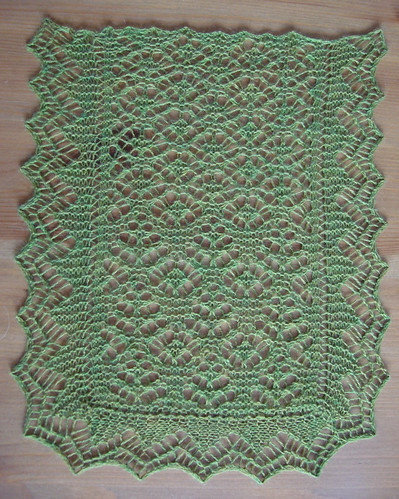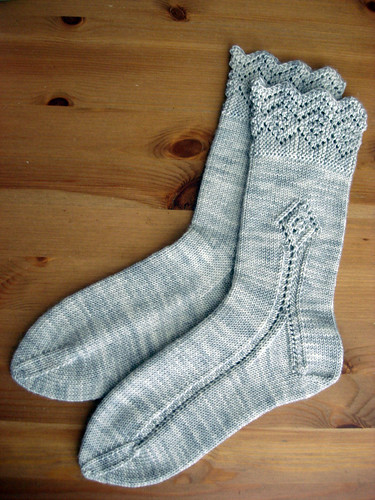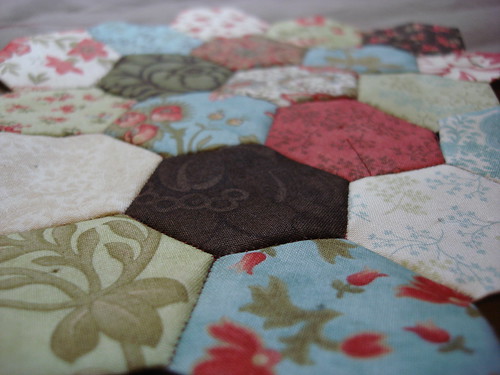
What I have in mind is a stole assembled from traditional Shetland lace patterns collected by Sharon Miller in her book Heirloom Knitting, and put together in the "borders-outward" style she suggests. You start by casting on some stitches provisionally and knitting the central section followed by a border. Then you put those stitches on hold, pick up the stitches from the cast-on edge, and work a second border in the opposite direction. The piece is finished off with a knitted-on edging worked all the way around—cast on a few stitches provisionally and join every other row of edging to a stitch picked up from the body. Once the edging is completed, you graft the end to the beginning (that's like ten stitches to graft, it's barely even a thing).
For my purposes, the central section and the border sections will be squares, 20" per side; the three sections in a row with a narrow edging all the way around will yield a generously-sized stole 24" x 64". I'm not sure yet how I feel about carting around that amount of knitting in the summer. The pattern is modular, though; a knitter can choose to cast on more or fewer stitches in multiples of ten, to make a stole that's wider or narrower, and knit more or fewer lengthwise repeats to lengthen or shorten the finished piece. I think a scarf would need different proportions, though—I'm thinking about more centre and less border, but I'd have to play around with it to see.
The swatch shows the pattern for each section—the densely-patterned diamond area is the centre and the little floral pattern it flows into is the border. The edging is narrow enough to lie flat at the corners without any special treatment. I decreased a few stitches on the last border row to see whether it would keep the edging from puckering on the short end, and it did! So that's a trick that will end up in the pattern.
I intend this to be a pattern for adventurous intermediate or newly advanced knitters. There is lace patterning on nearly every row (i.e. no resting rows!), but the patterns are easy to read and the repeats are easy to separate with stitch markers. There is no arduous counting because the motifs are small and closely-spaced. The knitting is not technically challenging; it has a garter stitch ground and only requires that the knitter know how to execute a yarn over, k2tog, and sk2p.
Those are my thoughts! I'm waiting on some yarn from Knit Picks to make samples of both stole and scarf—this is a pattern for their catalogue.




